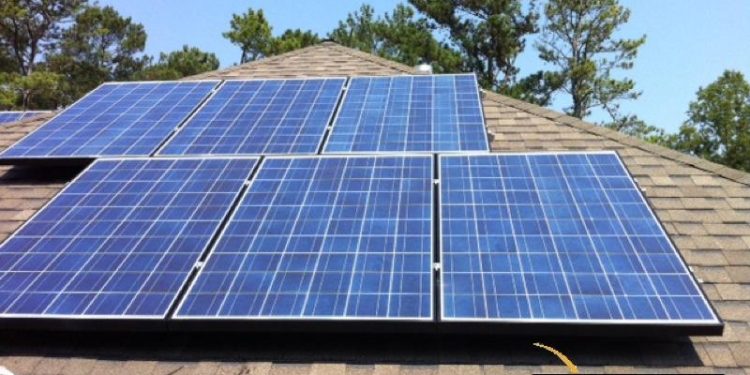In an era where sustainability and aesthetics often find themselves at odds, the conversation surrounding residential solar panels has taken a curious turn. As shimmering grids of silicon begin to crown rooftops in neighborhoods across the globe, they bring with them a new dimension to the dialogue about renewable energy. While many laud the environmental benefits of harnessing the sun’s power, others raise a question less frequently addressed: do these solar installations contribute to visual pollution? This article delves into the heart of this debate, exploring whether the quest for greener pastures inadvertently casts a shadow on the visual harmony of our communities. Through the lens of homeowners, environmentalists, and urban planners, we aim to uncover the multifaceted perspectives on whether residential solar is a beacon of progress or an eyesore in disguise.
Evaluating Aesthetic Concerns: The Visual Impact of Solar Panels
When it comes to integrating solar panels into residential areas, the debate often centers around their aesthetic appeal. Solar panels, with their sleek, metallic surfaces, can either complement or clash with the existing architectural designs. Some homeowners appreciate the modern look, finding the contrast between traditional roofing materials and the futuristic solar panels to be a symbol of progress and innovation. Others, however, argue that these installations disrupt the visual harmony of neighborhoods, particularly in areas where historical or classical styles dominate.
- Blending in with the Environment: Manufacturers are increasingly offering options that mimic traditional roofing materials, such as solar shingles or panels in various colors, to reduce visual impact.
- Placement Strategies: Strategic placement on less visible sections of the roof or using landscaping elements to shield the panels can help preserve the aesthetic of a property.
- Community Guidelines: In some regions, homeowner associations and local regulations dictate specific guidelines for solar panel installations to maintain community aesthetics.
Ultimately, the perception of solar panels as visual pollution is subjective, often influenced by individual taste and cultural perspectives on technology and environmental responsibility. As technology advances, solutions continue to evolve, aiming to strike a balance between sustainability and visual appeal.

Balancing Green Energy and Neighborhood Appeal
As solar panels become a common feature on rooftops, the conversation around their visual impact on residential areas has gained traction. On one hand, solar panels are a symbol of progress towards sustainable living, reducing reliance on fossil fuels and lowering carbon footprints. On the other, some homeowners argue that the traditional aesthetics of their neighborhoods are being disrupted. The sleek, often dark panels can contrast sharply with classic architectural styles, leading to debates about whether they constitute visual pollution.
- Design and Integration: Advances in technology are offering more visually appealing solutions. From solar shingles that mimic traditional roofing materials to panels designed to blend seamlessly with various architectural styles, innovation is key.
- Community Regulations: Some communities have started implementing guidelines to balance the benefits of solar energy with neighborhood aesthetics. These regulations can include placement suggestions and color options to harmonize with existing structures.
- Public Perception: As green energy becomes more mainstream, the perception of solar panels is gradually shifting. What was once seen as an eyesore may soon be viewed as a mark of forward-thinking and environmental responsibility.
Ultimately, the challenge lies in fostering a dialogue that respects both the push for renewable energy and the desire to maintain the visual harmony of our communities. Through thoughtful design and community engagement, it’s possible to achieve a balance that satisfies both objectives.

Innovative Design Solutions for Minimizing Visual Disruption
In the pursuit of harmonizing sustainability with aesthetic appeal, architects and designers are exploring innovative strategies to integrate solar technology into residential landscapes without compromising visual harmony. One promising approach is the development of solar shingles and tiles, which seamlessly blend into traditional roofing materials, offering a sleek, unobtrusive appearance. These advanced solutions not only provide the energy efficiency of conventional solar panels but also maintain the architectural integrity of the home.
- Color Matching: Customizing the color of solar components to align with existing roof materials enhances visual coherence.
- Adaptive Design: Utilizing flexible solar panels that contour to the unique shapes of roofs or facades.
- Camouflage Techniques: Implementing patterns and textures that mimic natural surroundings to disguise solar installations.
- Integrated Systems: Designing solar elements as part of the building structure, such as solar awnings or window films.
These solutions reflect a growing trend towards eco-friendly architecture that respects both the environment and community aesthetics, fostering a balance between technological advancement and visual serenity. As these designs continue to evolve, they hold the promise of transforming the perception of residential solar from a necessity to an artful addition.
Community Perspectives and Policy Recommendations for Harmonious Integration
In the discussion surrounding residential solar panels and their potential impact on community aesthetics, a multitude of perspectives emerge, each offering unique insights and policy recommendations. While some community members express concerns about the visual impact of solar installations, suggesting they may disrupt the architectural harmony of neighborhoods, others emphasize the importance of embracing sustainable energy solutions despite aesthetic considerations. To bridge these differing views, community leaders propose a few strategic recommendations:
- Design Standards: Implement guidelines that encourage the use of solar panel designs that blend seamlessly with existing architecture, such as using color-matched frames or integrated solar shingles.
- Community Engagement: Foster dialogue between residents, solar developers, and local governments to ensure a shared vision for sustainable development that respects both environmental goals and community aesthetics.
- Incentive Programs: Offer incentives for adopting visually harmonious solar solutions, encouraging residents to opt for installations that align with neighborhood character.
By considering these recommendations, communities can work towards a balanced integration of solar technology, maintaining the visual integrity of neighborhoods while advancing towards a greener future. This approach not only respects the diverse aesthetic preferences of residents but also champions a collective commitment to sustainability.
To Wrap It Up
In the grand tapestry of our evolving landscapes, the role of residential solar panels continues to spark vibrant discussions about aesthetics, sustainability, and innovation. As we stand at the crossroads of progress and preservation, it is clear that the conversation about visual pollution is as dynamic as the very skies we aim to protect. Whether solar panels are seen as a beacon of a greener future or a blemish on the traditional visage of our neighborhoods, they undeniably challenge us to rethink our perceptions of beauty and utility. As technology advances and design innovations emerge, perhaps we will find a harmonious blend where the sun’s gift can be harnessed without compromise. Until then, the dialogue persists, inviting us to reflect on the balance between embracing new solutions and cherishing the visual legacy of our communities. the future of solar may be as much about aesthetics as it is about energy, illuminating not just our homes, but our imaginations.

































